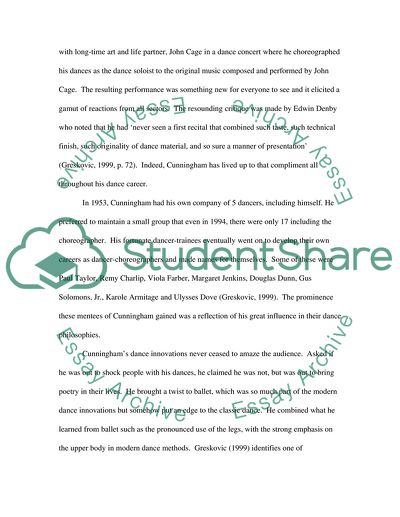Cite this document
(The Creative Innovation and Vast Influence of Merce Cunningham Essay, n.d.)
The Creative Innovation and Vast Influence of Merce Cunningham Essay. Retrieved from https://studentshare.org/performing-arts/1750649-which-practitioner-you-have-encountered-in-your-studies-do-you-consider-to-be-the-most-innovative-and-influential
The Creative Innovation and Vast Influence of Merce Cunningham Essay. Retrieved from https://studentshare.org/performing-arts/1750649-which-practitioner-you-have-encountered-in-your-studies-do-you-consider-to-be-the-most-innovative-and-influential
(The Creative Innovation and Vast Influence of Merce Cunningham Essay)
The Creative Innovation and Vast Influence of Merce Cunningham Essay. https://studentshare.org/performing-arts/1750649-which-practitioner-you-have-encountered-in-your-studies-do-you-consider-to-be-the-most-innovative-and-influential.
The Creative Innovation and Vast Influence of Merce Cunningham Essay. https://studentshare.org/performing-arts/1750649-which-practitioner-you-have-encountered-in-your-studies-do-you-consider-to-be-the-most-innovative-and-influential.
“The Creative Innovation and Vast Influence of Merce Cunningham Essay”, n.d. https://studentshare.org/performing-arts/1750649-which-practitioner-you-have-encountered-in-your-studies-do-you-consider-to-be-the-most-innovative-and-influential.


